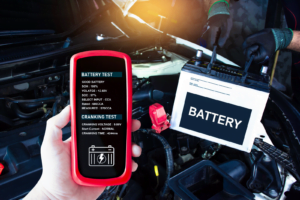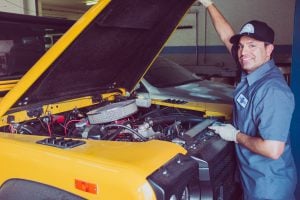
Tire pressure monitoring system’s (TPMS) are no longer a luxury vehicle item but a mandatory requirement on new vehicles. The individual wheel sensors collect information on the tire pressures and record fault codes that will activate a TPMS light on the dashboard of the vehicle. These sensors help to warn drivers of low tire pressures and sudden changes to tire pressures. The result of this type of monitoring and information is drivers will have the ability to be proactive rather than reactive when a blowout occurs. One other note, tire pressures typically decrease by 3 p.s.i. every 3 months so drivers will be able to correct the tire pressures before the warning light comes on.
When a warning light comes on, it is indicating an issue with the TPMS and a fault code will be generated to help diagnosis the issue. To read these fault codes and possibly reset them shops will need to have access to a TPMS tool. These tools will have a database of all manufacturers and vehicles and will either work wirelessly with the TPMS or plug into the OBD harness. My preference is for any tool that plugs directly into the OBD because this guarantees an interruption free signal. Secondly, plugging into the OBD will require less input from the user and is a fail safe way to diagnose issues. However, not all TPMS tools are created equal – by this, most universal tools will be able to read fault codes but not all will be able to reset the codes. When shopping for a TPMS tool it might be a good idea to find one that can reset the codes on the widest range of vehicles. In this article you will find a picture of the ATEQ TPMS VT55 OBDII unit which is universal and offers fault code information on a wide range of vehicles but can not reset codes on all the vehicles (take a close look at the car compatibility information when purchasing a tool).
To continue to offer information and services geared to drivers and customers I feel it is important that shops make an investment in a TPMS tool to help customers understand why the light has come on even if you are not equipped to service the light.
Written by Ronald Rameshnauth






